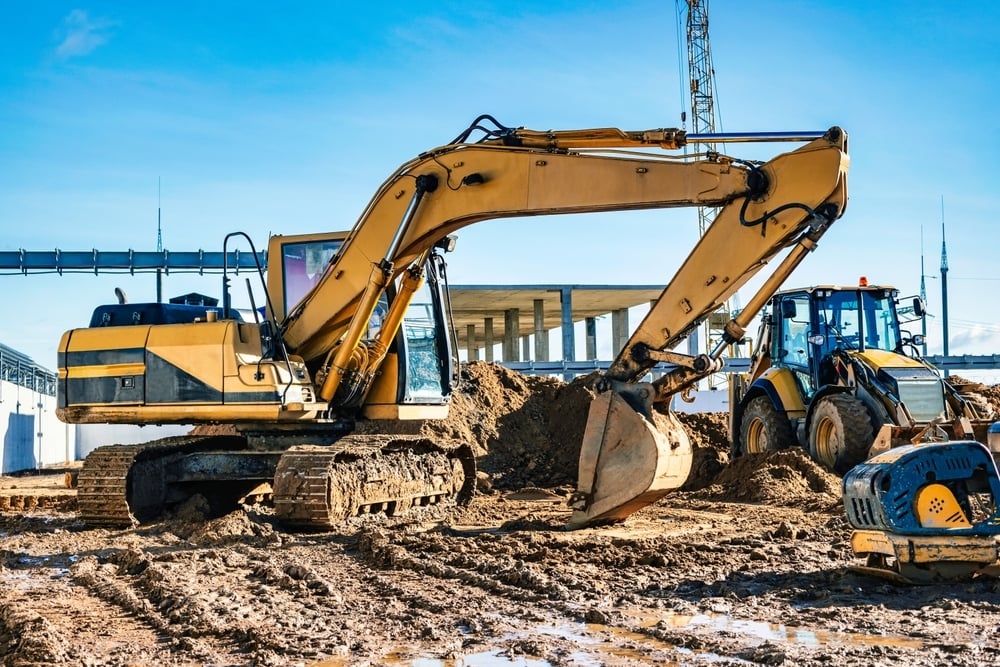Keeping Morale High During Holiday Deadlines: Tips for Construction Teams
The holiday season can be a challenging time for construction companies. As deadlines approach and project pressures mount, it’s natural for stress...
4 min read
Baldwin CPAs 11/17/25 12:44 PM

The One Big Beautiful Bill Act (OBBBA), enacted earlier in 2025, restored 100 percent bonus depreciation for qualifying property placed in service on or after January 19, 2025. This key provision reverses the phasedown that had reduced bonus depreciation to 40 percent earlier in the year. For contractors, this means new and used equipment, such as excavators, bulldozers, or fleet trucks, may now be fully expensed in the year they are put into service rather than depreciated over several years.
At the same time, Section 179 expensing remains available, providing additional flexibility for small to mid-sized construction firms. For 2025, the Section 179 deduction limit rises to $1.25 million, with a phase-out threshold of $2.5 million in total asset purchases.
Together, these provisions create a strong year-end buying window for contractors looking to invest in equipment, manage taxable income, and improve cash flow.
Bonus depreciation applies to a wide range of tangible property with a recovery period of 20 years or less, including:
Both new and used assets qualify, provided they were not previously owned by the taxpayer and were acquired through an arm’s-length transaction.
To qualify for the restored 100 percent deduction, property must be placed in service on or after January 19, 2025. This means the equipment must be delivered, installed, and ready for use on or before December 31, 2025.
For contractors, timing is critical: if a new backhoe or truck chassis is delivered in December but not fully operational until January, it could affect whether the deduction falls under the 2025 or 2026 rules.
Large contractors often experience supply-chain or delivery delays, so scheduling installation and acceptance testing should be part of year-end planning. Work with vendors to obtain written confirmation of delivery and in-service dates; this documentation is essential if the IRS reviews your deduction.
While bonus depreciation offers 100 percent expensing for most qualifying assets, Section 179 allows businesses to choose which assets to expense immediately and which to depreciate over time.
For 2025, the key Section 179 limits are:
Unlike bonus depreciation, Section 179 is limited to taxable income. You cannot use it to create or increase a loss. However, you can carry forward unused Section 179 deductions to future years.
Contractors operating in Kentucky or other nonconforming states must remember that state depreciation rules often differ from federal law.
Kentucky, for example, does not conform to federal bonus depreciation and caps Section 179 expensing at a much lower threshold. This means firms taking 100 percent bonus depreciation federally may have to add back depreciation on their state return, creating a temporary difference and higher state taxable income.
Maintain separate fixed-asset ledgers for federal and state purposes. This dual tracking ensures accurate reporting and prevents surprises at tax time. Baldwin CPAs can also help identify state-specific elections to minimize addbacks and smooth cash flow.
While OBBBA made 100 percent bonus depreciation permanent for property placed in service after January 19, 2025, contractors should still plan for long lead times on large equipment and vehicles.
Key Strategies for 2026
Used equipment qualifies for 100 percent bonus depreciation if it meets the acquisition and ownership criteria. This is a major advantage for contractors purchasing refurbished or fleet vehicles.
Interior improvements to nonresidential buildings can be fully expensed under the new law. This is especially useful for contractors updating office or warehouse space.
Certain light-duty vehicles remain subject to luxury auto limits under Section 280F. However, heavy SUVs and trucks with a gross vehicle weight rating (GVWR) over 6,000 pounds may qualify for full expensing.
Baldwin CPAs helps contractors evaluate the optimal mix of bonus and Section 179 deductions by asset category, project timing, and financing method.
Our team ensures you have audit-ready evidence: invoices, delivery receipts, placed-in-service certifications, and ledger entries that support deductions under both federal and state rules.
We track IRS updates, state conformity changes, and financial-statement implications, so your depreciation strategy remains both compliant and advantageous.
With full bonus depreciation back in play and Section 179 limits rising, 2025 offers a powerful window to refresh your equipment fleet, reduce taxable income, and strengthen cash flow. Timing is everything: plan early, document thoroughly, and coordinate with your Baldwin CPAs before December 31. Reach out today.
Q: Does 100 percent bonus depreciation apply to used equipment?
Yes. Used machinery and vehicles qualify if you did not previously own them and they were acquired in a standard purchase (not from a related party).
Q: What does “placed in service” mean for construction assets?
It means the asset is ready and available for its intended use—installed, tested, and in working condition by December 31, 2025.
Q: How do Section 179 and bonus depreciation differ?
Section 179 has annual dollar limits and cannot create a loss. Bonus depreciation has no such cap and can drive a net operating loss (NOL).
Q: How does Kentucky treat bonus depreciation?
Kentucky does not conform to federal bonus depreciation. Firms must adjust for addbacks on their state returns.
Q: Can 100 percent bonus depreciation create cash-flow issues with lenders?
Yes, since the deduction reduces book income and could affect loan covenants tied to EBITDA. Contractors should model these impacts with their CPA.

The holiday season can be a challenging time for construction companies. As deadlines approach and project pressures mount, it’s natural for stress...

If you had to make a list of some of the most difficult parts of the construction process, bidding would undoubtedly be right at the top. Even...

The construction industry took a significant hit as a result of the COVID-19 pandemic. Many projects slowed or completely stalled, and supply chain...